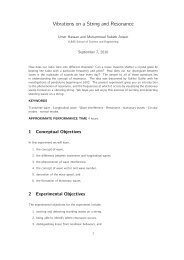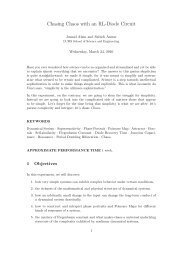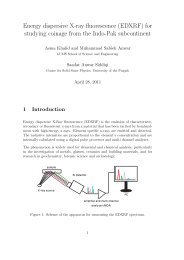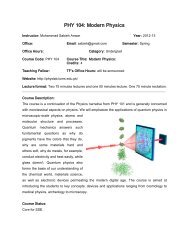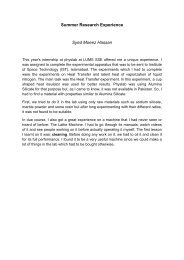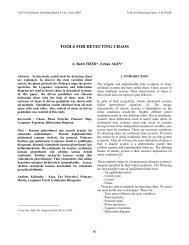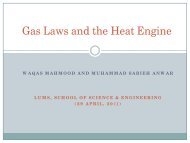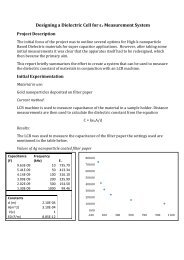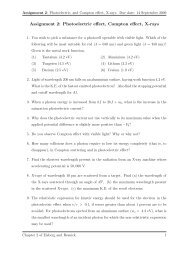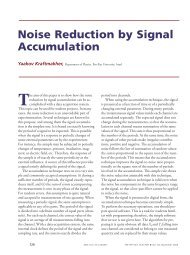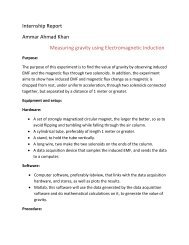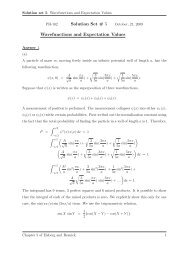Energy dispersive X-ray fluorescence (EDXRF) - Experimental Physics
Energy dispersive X-ray fluorescence (EDXRF) - Experimental Physics
Energy dispersive X-ray fluorescence (EDXRF) - Experimental Physics
Create successful ePaper yourself
Turn your PDF publications into a flip-book with our unique Google optimized e-Paper software.
different mines in the region as well as the tracing of mercantile and trade routes.<br />
3 Proposed experimental work on coin archeometry<br />
using <strong>EDXRF</strong><br />
The objective of the proposed experiment is to analyze and study the historical<br />
coins of the sub-continent that were minted in the region from approximately 200<br />
BC to 1947 AD. For this purpose, a collaboration with the Lahore museum would<br />
be beneficial since these museums possess a treasure of coins which were minted and<br />
used during different historical periods. The X-<strong>ray</strong> spectroscopy of the coins can<br />
provide a good opportunity to understand the technology, political and economic<br />
history of different reigns and empires of the sub-continent.<br />
The hardware components used for self-assembled <strong>EDXRF</strong> spectrometer include an<br />
X-<strong>ray</strong> source, a Si X-<strong>ray</strong> detector and a radiation shielding box, all three mounted<br />
on a transportable unit. The data will be analyzed using a digital pulse processor<br />
and personal computer. The complete setup is shown in Figure 1. The X-<strong>ray</strong>s<br />
possess an energy of 25 keV and are produced from a Ag anode.<br />
(a)<br />
1<br />
(b)<br />
4<br />
3<br />
2<br />
Figure 2: (a) The <strong>EDXRF</strong> hardware components including the X-<strong>ray</strong> generator<br />
and detector mounted on the base plate. 1: X-<strong>ray</strong> tube, 2: Si-detector, 3: sample<br />
holder and 4: radiation shielding. (b) Sample coin mounted on the sample holder.<br />
3.1 Softwares for quantitative analysis<br />
3.1.1 ADMCA 2.0: element identification software<br />
ADMCA 2.0 is a Windows-based software package that acquires and displays the<br />
spectral data and performs the necessary signal processing. Spectral analysis features<br />
include setting regions of interest (ROI) for the peaks obtained and element<br />
distinction on the basis of characteristic energies of the centroid for the respective<br />
4



